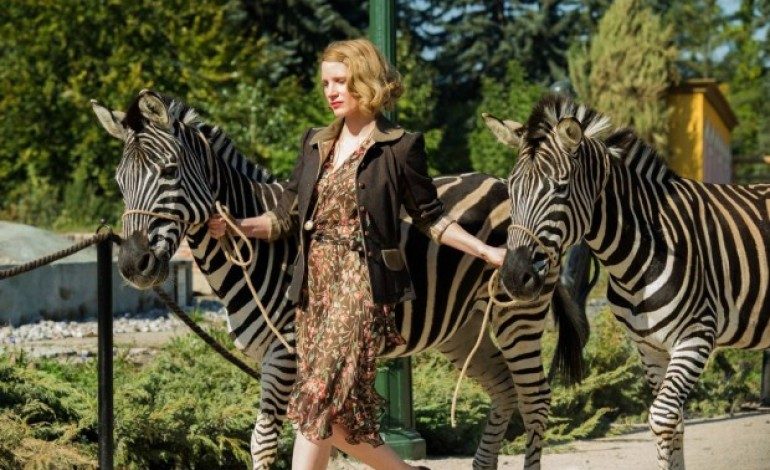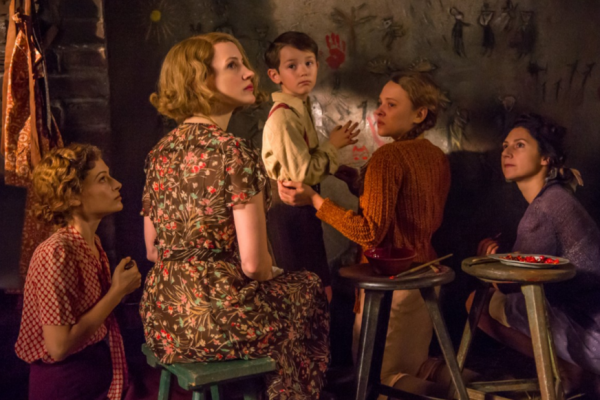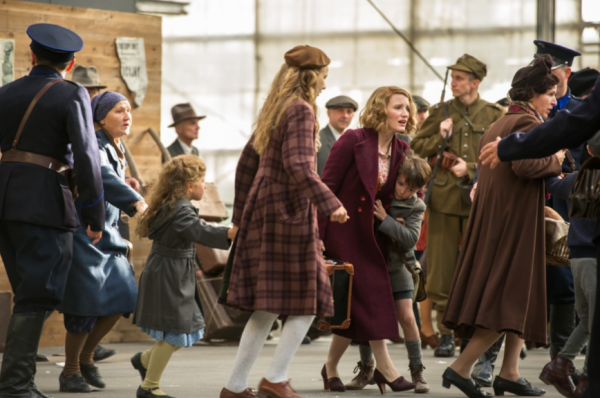

In the last few years, it has often seemed that WWII period films have exhausted all possible plots. But The Zookeeper’s Wife is certainly an exception. Based on the international best-seller, non-fiction book by Diane Ackerman, director Niki Caro (Whale Rider, McFarland U.S.A.) has found a relatively unknown story with a heart wrenching course of events and graced it with a poetic structure. The film is further grounded by Jessica Chastain, who gives a touching performance as Antonina Zabinska. Doubtfully award-worthy, but nonetheless incredibly commendable. The Zookeeper’s Wife is certainly worth the trip to the theater.
From the first scene where you see Adam, the camel chasing Chastain’s Antonina as she pedals around her bike around the zoo, you understand the whimsical, nostalgic environment in which the Zabinski family lives. Removed from not only the rest of the world, but the rest of the city, the Warsaw Zoo calls to mind the early zoos of the 20th century, with intricate landscaping and architecture adorned with pastel palette (the entire zoo was a large set created in Czech Republic for the film, and stocked with real animals). Lion cubs, kangaroos, zebras, elephants, monkeys, and more populate the screen within the first few minutes, and the audience will have a difficult time not immediately bonding with these helpless creatures, who will soon be confronted with German occupation.
One of the most moving scenes is the bombing of the zoo, in which through effective editing, the animals react to the bombing. After the attack, many of the animals escape and are found roaming the streets of Warsaw, which is an incredible sequence considering it suddenly becomes clear that these exotic animals were more at home with their loving caretakers, not roaming on their own. Following the occupation of Warsaw, seeing a deserted zoo is disturbingly unnatural and shows audiences an often overlooked consequence of the war. As Chastain’s character says in the film “You look in their eyes and see exactly what’s in their hearts.” The ability of Caro to allow the audience to empathize with the animals, purely and organically authentic in their intentions, truly is one of the strengths of the film. But never does she cross the line, trying to force human emotions on the animals. But what the Zabinski’s then do with their property following the occupation is beautifully and cleverly orchestrated, and well-told by Caro.
Beyond the animals, the human storyline is just as moving. Antonia Zabinski and her zoologist husband Dr Jan Zabinski (Johan Heldenbergh), finding their life uprooted, propose a “pig farm” to their German friend and fellow zoologist Lutz Heck (Daniel Brühl), who is now a Nazi officer. While the couple does indeed start a pig farm, they use the pigs as a cover for bringing in hundreds of Jews from the local Warsaw ghetto. Both Heldenbergh and Brühl give strong supporting performances, while still allowing Chastain to shine as the lead.
It’s some of the symbolism that makes this film weak at times. At the first moment you see the guests begin drawing the star of David on the walls of their space, no matter how touching the act is, you know that leaving the permanent evidence will come back to haunt them. But incredibly, not in the way your presume it will. Regardless, I would have liked to see more intimate moments between the guests themselves, to give a little more insight into their concerns and worries as persecuted Jews.
Verdict: 4 out of 5
While it may not join the ranks of Schindler’s List, The Pianist, or Life is Beautiful, it is one of the best WWII-era films in the last few years, and will certainly make audiences smile at times, and at other moments reduce them to tears. Only enhanced by the fact that it is a real story, the story is full of relatable human and non-human characters. Though it does not depart from the general Holocaust hero narrative, it is still a graceful, thought-provoking film, that honors a beautiful true story.


